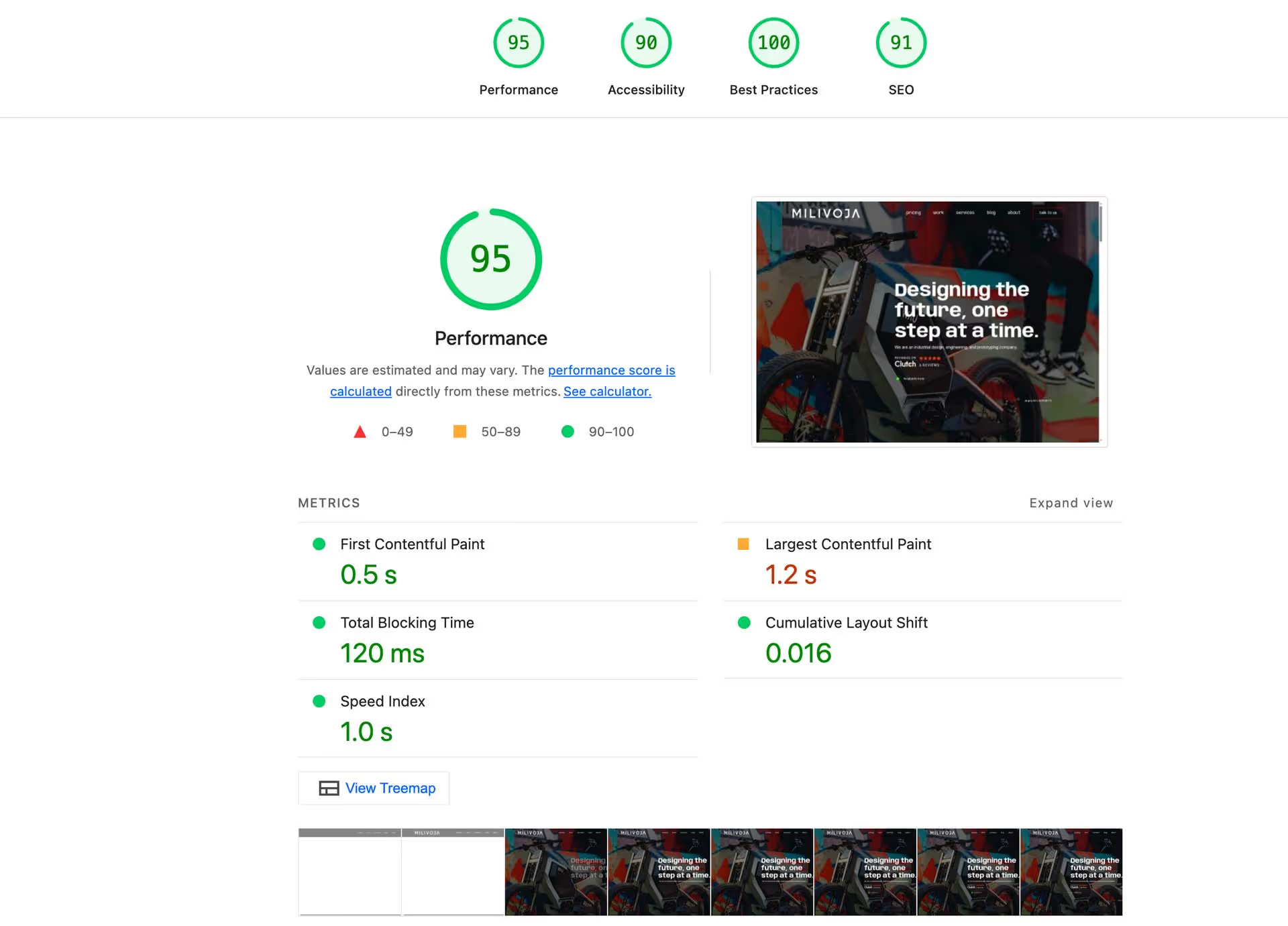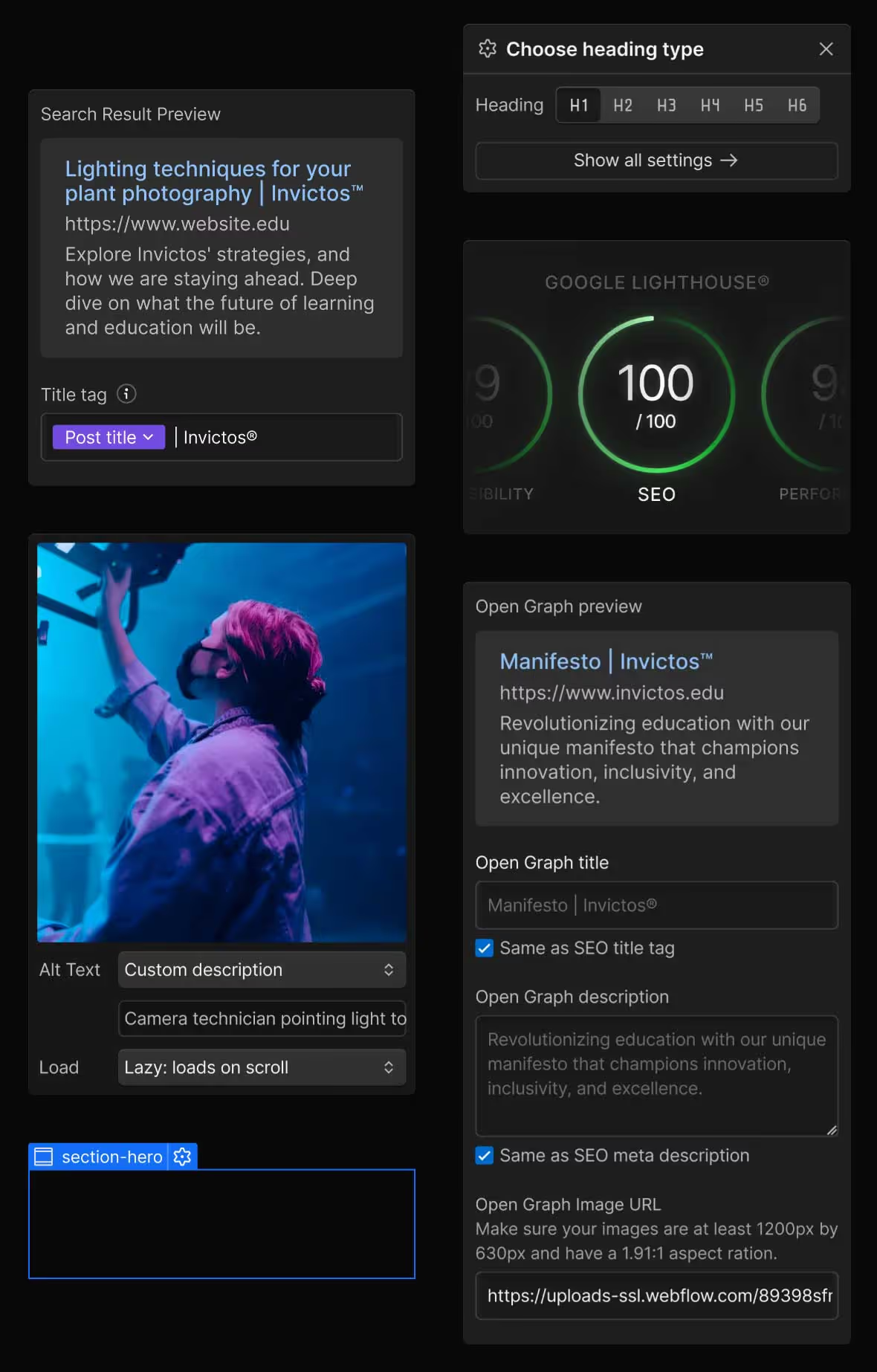Switching from Wordpress to Webflow in 2025 (Pros and cons)
.avif)
In 2025, more B2B, SaaS, and enterprise brands are switching from WordPress to Webflow to reduce technical debt, improve site speed, and give marketing teams more control. While WordPress still excels in plugin variety and open-source flexibility, Webflow offers cleaner performance, built-in SEO tools, and no maintenance overhead. For companies tired of plugin conflicts and developer bottlenecks, Webflow is the modern choice, faster, leaner, and more scalable for growth-driven teams.
If you're asking yourself, "Why move from WordPress to Webflow?" in 2025, you're not alone. With the rise of no-code platforms and the demand for faster, leaner, and SEO-ready web experiences, Webflow is becoming the go-to choice for businesses, especially in B2B, SaaS, and enterprise spaces.
But is switching from WordPress to Webflow the right move for your business in 2025? Let’s break down the pros, cons, and cost implications to help you decide.
Why switching from WordPress to Webflow in 2025?
WordPress still powers a significant portion of the web. But for many growing companies, the flexibility it offers also comes with technical debt, bloated plugins, security concerns, and rising maintenance costs.
That’s where Webflow enters the picture, offering visual development, built-in hosting, and production-ready CMS features in a single platform.
Top reasons brands are making the switch:
- To reduce reliance on developers and freelancers
- To give marketers direct control of content updates
- To improve speed, SEO, and user experience
- To modernize outdated WordPress designs
- To remove hidden costs from maintenance and plugin issues
If you're already considering this move, explore our WordPress to Webflow Migration Sprint to see how we make it seamless in just 3 weeks.
Pros of switching to Webflow in 2025
1. Speed and performance
Webflow hosting is enterprise-grade out of the box. With AWS infrastructure and Fastly CDN, your site is built for speed globally. No more caching plugins or server optimizations. This directly impacts your Core Web Vitals, bounce rate, and lead conversion rates. Visit our homepage to see real examples of high-performing Webflow sites.

2. Visual control & developer-level precision
Forget struggling with Elementor or Gutenberg. Webflow gives designers complete control using real CSS properties in a visual canvas. With systems like Client-First by Finsweet, your team can scale pages fast without technical debt. Our Webflow development services are built to empower marketing teams, not replace them.

3. SEO built into the platform
Webflow was made with SEO in mind, customizable metadata, canonical tags, schema, fast loading, clean HTML output, and auto-generated sitemaps. You’ll be set up to rank from day one, without relying on 5 separate plugins to do it. If you're serious about organic traffic growth in 2025, Webflow is already ahead of WordPress.

4. No plugins, no maintenance headaches
The biggest pain point with WordPress is plugin dependency. Every time a plugin breaks or conflicts with another, you’re stuck. Webflow eliminates this by keeping everything native: forms, CMS, redirects, SEO controls, backups, and more. Plus, SSL and security patches are automatic.
Cons of moving to Webflow in 2025
1. Plugin ecosystem limitations
If your business relies on complex WordPress plugins (e.g. advanced eCommerce, LMS, or booking systems), you’ll need to explore no-code alternatives like Xano, Make, Memberstack, or Wized. The ecosystem is growing fast, but isn’t as deep as WordPress (yet).
2. No free multilingual setup
Webflow launched its Localization feature, but it’s a paid add-on. If you want to expand globally, you’ll need to pay for additional locales or integrate Weglot. However, Webflow gives you full SEO control over each language version, something most WordPress setups struggle with. Need help setting this up? Get in touch with our team of multilingual SEO and Webflow specialists.
3. Learning curve for developers
Developers new to Webflow might face a short learning curve if they’re used to traditional code-based workflows. But once up to speed, your team will ship pages and iterations 3x faster.
Is Webflow more expensive than WordPress?
This is one of the most common questions we hear:
"Is Webflow more expensive than WordPress in 2025?"
At first glance,yes, Webflow has a monthly hosting fee between $20 and $50 per site.
But when you add up the real costs of WordPress, things look very different:
Total Cost of Ownership (TCO) often makes Webflow cheaper over time.
Is WordPress better than Webflow in 2025?
If your business requires complex open-source customizations, runs on WooCommerce, or uses niche plugins, WordPress is still powerful. But for modern B2B, SaaS, and service businesses who value performance, design, and team autonomy, Webflow is winning.
Especially when paired with:
- Clear CMS structure
- Visual development
- Fewer dev bottlenecks
- Scalable design systems
- Lower maintenance costs
When to choose Webflow (use cases in 2025)
- SaaS teams scaling fast and shipping new pages weekly
- B2B companies focused on SEO and high-value lead generation
- Design agencies building for speed and client independence
- Marketing directors who want freedom from developer bottlenecks
- Startups who need fast launch times with enterprise quality
Final thoughts: Should you switch?
If you're tired of managing WordPress plugins, fixing broken layouts, or waiting days for minor updates, Webflow is the upgrade your marketing team needs. Switching from WordPress to Webflow in 2025 isn't just about choosing a new CMS, it's about modernizing your operations, speeding up your marketing, and reducing long-term costs.

.svg)
.svg)


.svg)




